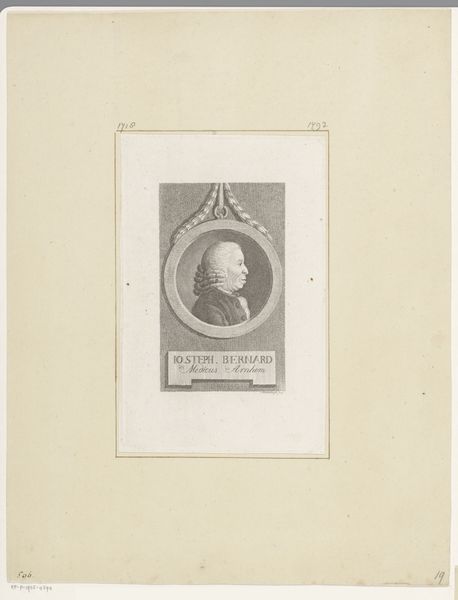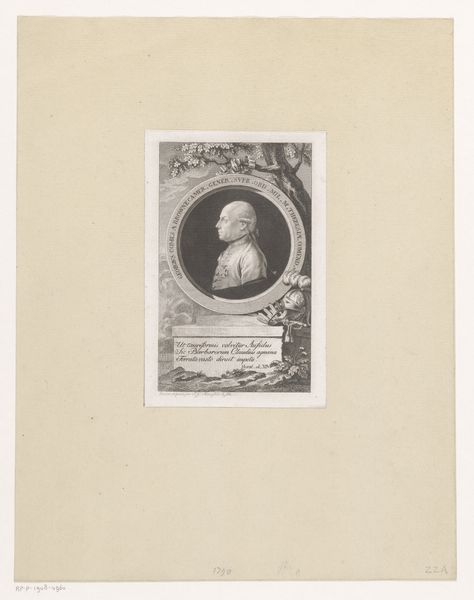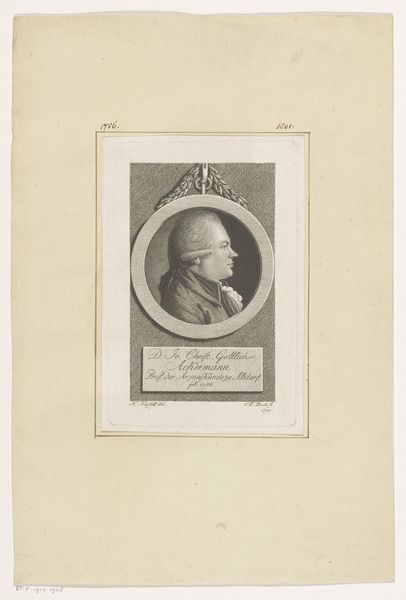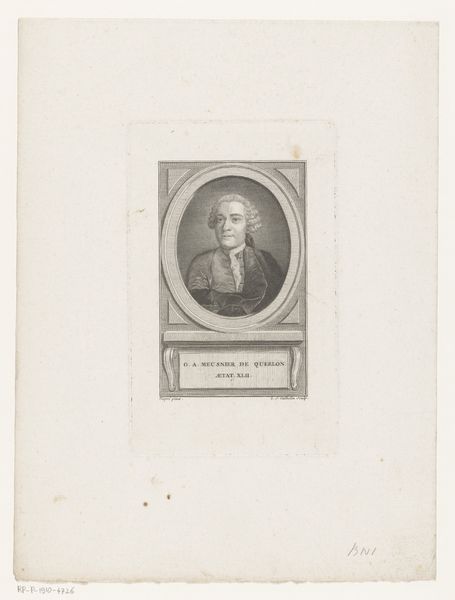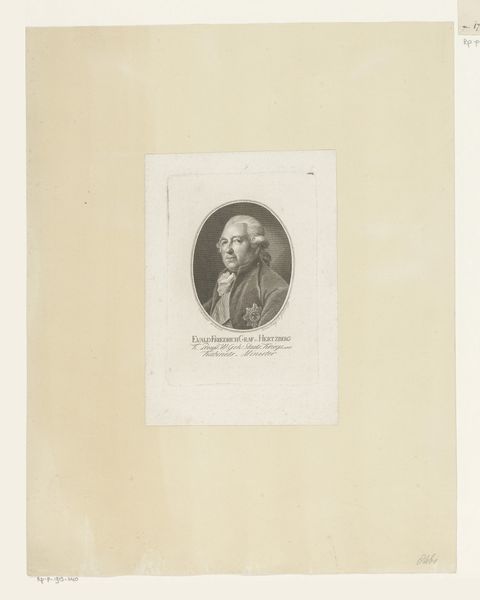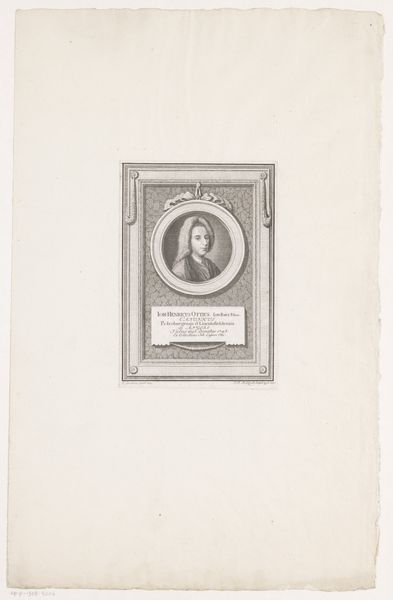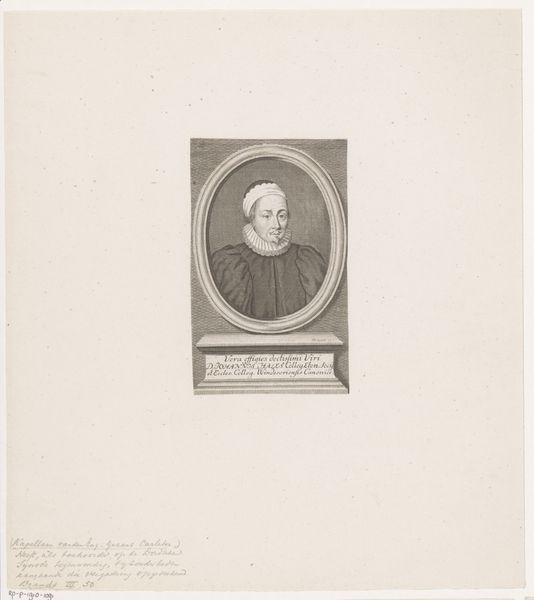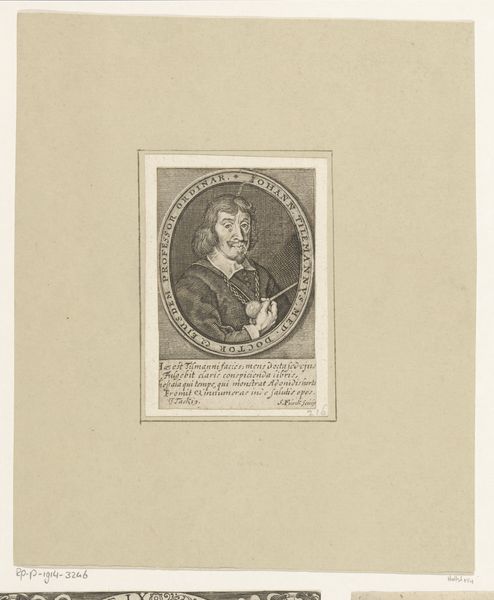
Dimensions: height 181 mm, width 120 mm
Copyright: Rijks Museum: Open Domain
Curator: This is a portrait of Reinier Adriaensz. Pauw, made between 1749 and 1796 by Jacob Houbraken. It's an engraving on paper. What's your initial take? Editor: Stark. Very formal, very buttoned up. The ruff frames his face like a sort of… gilded cage. It's clearly intended to convey status, but to me, it speaks more to restriction. Curator: That's an interesting reading. The ruff, the somber dress, it's all part of portraying him as a burgher of Amsterdam, a figure of authority. I think his political position and social standing should be front and center for consideration. What do you see? Editor: It's a study in the textures created through engraving—the varying densities of lines used to articulate form, the subtle differences hinting at the cloth of his cloak, and that dense paper ruff. The labor involved in its making is very apparent to me. We need to contextualize this by understanding how accessible prints like these were, as compared to painted portraits for example. How was it distributed, consumed? Curator: Agreed, we must consider how prints disseminated images and power. Jacob Houbraken's body of work contributes to a larger conversation about representation. It is an act of reinforcing particular hierarchies, the elites and established families and it certainly served its purpose back in its time. Do you feel the medium choice served to democratize representation at all? Editor: Democratize? Maybe incrementally. While engraving allowed for multiple impressions, distribution and cost would still limit its reach, focusing on the merchant class perhaps more than other segments of the populace. The materials, ink, and the paper have economic implications too. I would also want to examine if this print was included within any of the publications about wealthy families from that time period. Curator: Yes, thinking about it as a material object with a history of circulation reveals new depths. Understanding its position as an accessible but perhaps also propagandistic tool illuminates so much. Editor: Exactly. It brings us closer to understanding the economy and culture it was produced in. I walk away understanding the importance of labor when looking at visual objects.
Comments
No comments
Be the first to comment and join the conversation on the ultimate creative platform.
